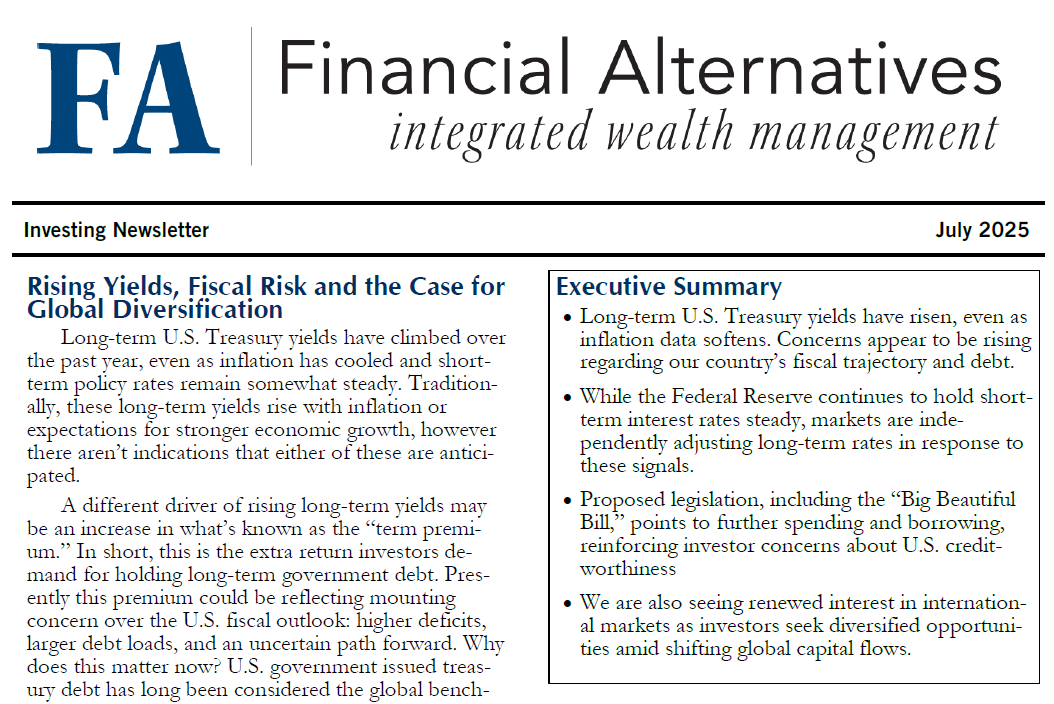
Newsletters
Let our knowledge, experience and wisdom guide you.
Read our latest Newsletters
The US equity market posted positive returns for the quarter and outperformed non-US developed markets but underperformed emerging markets.
US real estate investment trusts outperformed non-US REITs during the quarter.
During the quarter, interest rates decreased within the US Treasury market.
Generally, changes to individual taxes are positive but with limitations for higher income taxpayers in the highest brackets. Proactive tax planning will be crucial in many cases.
The estate tax exemption amount was increased tom $15 million per person, indexed to inflation starting in 2026. Wealth transfer and gifting strategies may need to be reviewed.
OBBBA expands provisions from the 2017 Tax Cuts and Jobs Act (TCJA) to favor small business owners. Business owners should consider ways to take advantage of this.
Long-term U.S. Treasury yields have risen, even as inflation data softens. Concerns appear to be rising regarding our country’s fiscal trajectory and debt.
Proposed legislation, including the “Big Beautiful Bill,” points to further spending and borrowing, reinforcing investor concerns about U.S. creditworthiness.
We are also seeing renewed interest in international markets as investors seek diversified opportunities amid shifting global capital flows.
The US equity market posted positive returns for the quarter and underperformed both non-US developed and emerging markets.
US real estate investment trusts underperformed non-US REITs during the quarter.
During the quarter, short- to intermediate-term interest rates decreased, and long-term interest rates increased within the US Treasury market.
The US equity market posted negative returns for the quarter and underperformed both non-US developed and emerging markets.
Developed markets outside of the US posted positive returns for the quarter and outperformed both US and emerging markets.
US real estate investment trusts underperformed non-US REITs during the quarter.
Some are worried that Social Security may not be there when they retire. Even without increasing taxes, the Social Security system is projected to be able to pay 73% of promised benefits all the way out to the year 2098.
The primary source of Social Security funding—payroll taxes—is continuous. As long as people are working, the system collects revenue. Currently, payroll taxes cover about 77-80% of benefit payments even without trust fund reserves.
Unlike private financial schemes, Social Security is backed by the full faith and credit of the U.S. government. Congress has adjusted Social Security multiple times in its history, including the 1983 reforms, which raised the retirement age and increased payroll taxes to stabilize funding. Future adjustments will likely follow a similar path.
RECENT BLOG POSTS
Disclaimer
Posts are general in nature and do not constitute the rendering of legal, investment, accounting or other professional advice. Please refer to our Disclosures for more information.




